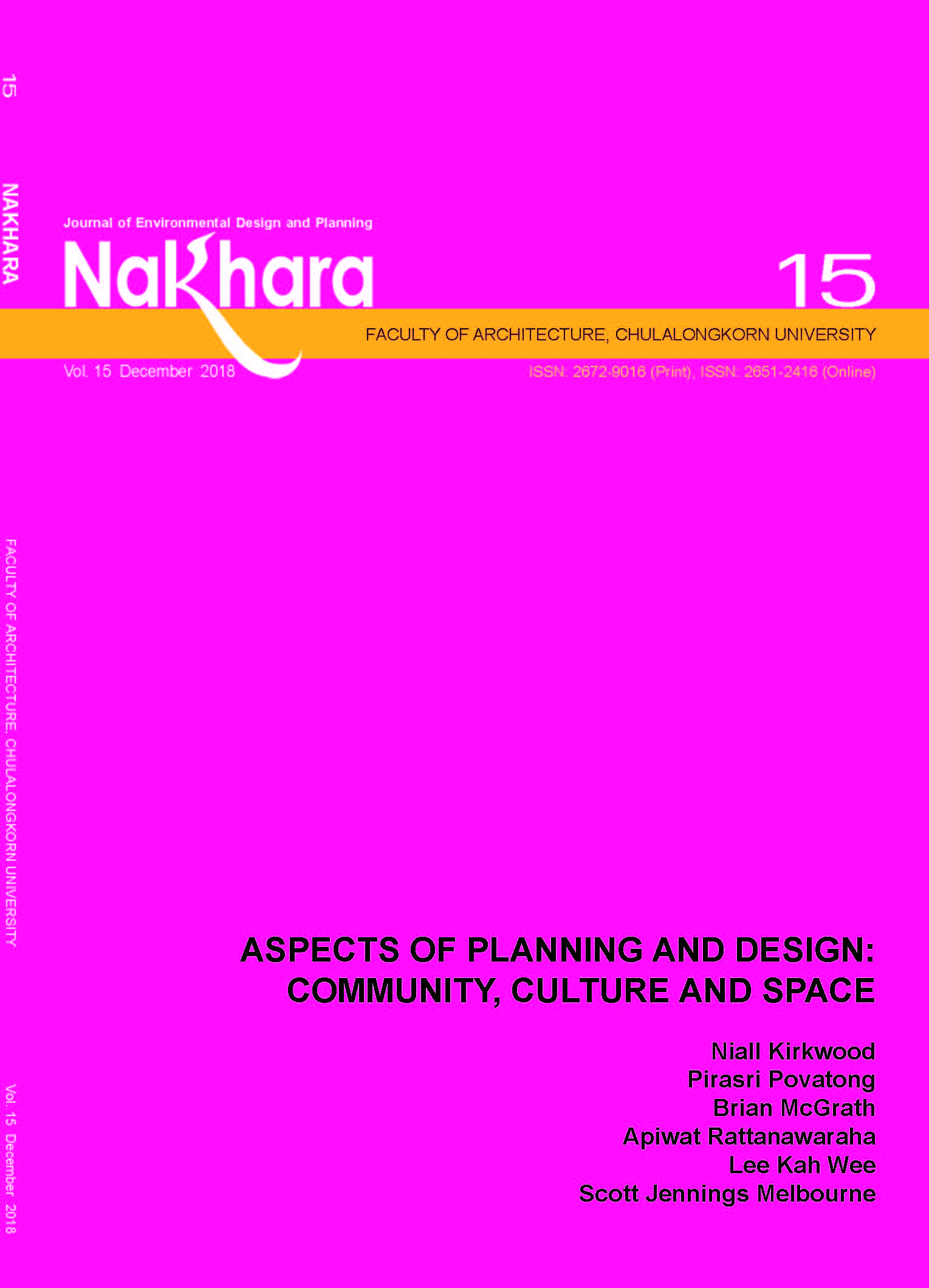Applying the Analytical Hierarchy Process (AHP) Approach to Assess an Area-Based Innovation System in Thailand
Main Article Content
Abstract
This paper examines the criteria that is significant in building an area-based innovation system in Thailand. The Analytical Hierarchy Process (AHP) questionnaire was distributed to experts in the area of urban planning, development, and policy studies. They assessed and prioritized indicators that could shape the innovation system on a regional scale. The study found that enhancing human capital, innovation collaboration, innovation capability, cultural/knowledge resources, and innovation capacity is more important, rather than focusing on physical infrastructure development. This implies that major elements for an area-based innovation system in Thailand highly depend on citizen, institutions, and linkages across sectors.
Article Details

This work is licensed under a Creative Commons Attribution-NonCommercial-NoDerivatives 4.0 International License.
References
Banomyong, R. (2008). Benchmarking economic corridors logistics performance: A GMS border crossing observation. World Customs Journal, 4(1), 29-38.
Banomyong, R. (2010). Logistics development in the North–South economic corridor of the Greater Mekong Subregion. World Customs Journal, 4(1), 43–57.
Camoin Associates. (2015). I-86 Innovation corridor - strategic action plan. Retrieved October 2017, from https://www.camoinassociates.com/sites/default/files/0%20%20Main%20Narrative%20-%20I
Carayannis, E. G. & Campbell, David, F. J. (2014). Developed democracies versus emerging autocracies: Arts, democracy, and innovation in quadruple helix innovation systems. Journal of Innovation and Entrepreneurship, 3(12), 1-23.
Curley, M. & Salmelin, B. (2018). Open innovation 2.0: The new mode of digital innovation for prosperity and sustainability. Springer, chapter 4.
Davoudpour, Z. & Moghaddam, M. S. (2015). Defining and prioritizing the effective urban planning indicators on the citizenship rights achieving by using AHP (Case Study: Islamic Republic of Iran). Civil Engineering and Architecture, 3(3), 43-47.
Kasie, F. M. (2013). Combining simple multiple attribute rating technique and analytical hierarchy process for designing multi-Criteria performance measurement framework. Journal of Researches in Engineering Industrial Engineering, 13(1), 14-30.
Liaghat, M., Shahabi, H., Deilami, B.R., Ardabili, S., Seyedi, N. S., & Badri, H. (2013). A multi-criteria evaluation using the analytic hierarchy process technique to analyze coastal tourism sites. APCBEE Procedia, 5(2013), 479-485.
Matricola, G. D. L. SMART Method. Retrieved September 2018, from https://elearning.unite.it/.../Smart%20method_gaia%20di%20loreto.pdf
Mu, E. & Pereya-Rojas, M. (2017). Practical decision making: An introduction to the analytic hierarchy process (AHP) using super decisions V2. Springer, chapter 2.
Octaviano, T. P. (2014). Economic corridors boost markets, living conditions. Business World Research. Retrieved March 2017, from http://research.bworldonline. com/popular-economics/story.php?id=350&title=Economic-corridors-boost-markets,-living-conditions%20
Oddershede, A., Arias, A., & Cancino, H. (2007). Rural development decision support using the analytic hierarchy process. Mathematical and Computer Modelling, 46(2007), 1107-1114.
Risawandi, & Rahim, R. (2016). Study of the simple multi-attribute rating technique for decision support. International Journal of Scientific Research in Science and Technology, 2(6), 491-494.
Saaty, T.L. (1980). The analytic hierarchy process. New-York: McGraw-Hill.
Saaty, T. L., & Beltran, M. H. (1982). The analytical hierarchy process: A new approach to deal with fuzziness in architecture. Architectural Science Review, 64-69.
Saaty, T. L. & Vargas, L. G. (1994). Decision making in economic, political, social, and technological environments with the analytic hierarchy process. The Analytic Hierarchy Process Series, 7. Pittsburgh, PA: RWS Publications.
Saravisutra, A. (2016). Multi-criteria decision making: Comparison between SAW, AHP and TOPSIS concept and methods. Princess of Naradhivas University Journal, 8(2): 180-192.
Scandria. (2016). The Scandinavian-Adriatic corridor for innovation and growth. Retrieved from
http://www.scandriaproject.eu/templates/File/dl-communication/100806%20-%20Scandria_Flyer.pdf
Smith, B. (2016). An idea whose time has come: A new Cascadia innovation corridor connecting Vancouver and Seattle. Retrieved from http://blogs.microsoft.com/on-the-issues/2016/09/20/idea-whose-time-come-new-cascadia-innovation-corridor-connecting-vancouver-seattle/#sm.001sy8e7h13lffhppgi2caaa7481d
Tontisirin, N. & Anantsuksomsri, S. (2012). An economic approach to urban design: An integration of economic-based analysis and urban design. In Horayangkura, V. & Jamieson, W. (Eds.), The Design and Development of Sustainable Cities (83-91). Bangkok: GBP Center.
Wingfield, N. (2016). Next Big Tech cCorridor? Between Seattle and Vancouver, planners hope. Retrieved from http://www.nytimes.com/2016/10/03/technology/next-big-tech-corridor-between-seattle-and-vancouver-planners-hope.html?_r=0

